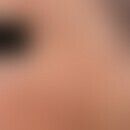Synonym(e)
Definition
Gemisch aus etwa 30 veresterten Triterpensaponinen aus dem Samen der Rosskastanie (Hippocastani semen, Aesculus hippocastanum, Cortex Hippocastani).
Wirkungen
Gering spasmolytisch, antiphlogistisch, antiödematös, Erhöhung der Kapillarpermeabilität (bremst den Wassereinstrom in den extrakapillären Raum).
Merke! Die perkutane Resorption ist fraglich!
Auch interessant
Anwendungsgebiet/Verwendung
Dosierung
- Systemisch: Inital 3mal 20-40 mg/Tag, dann 2-3mal 20 mg/Tag p.o.
- Topisch: i.A. werden 1% Externa angewendet (z.B. 1% Aescin-Gel); 3mal/Tag dünn im Erkrankungsgebiet auftragen.
Unerwünschte Wirkungen
Bei systemischer Anwendung Gefahr von Nierenfunktionsstörungen bis hin zum Nierenversagen, Thrombosegefahr.
Bei topischer Applikation.: allergische Hautreaktionen (Kontakturtikaria) sind beschrieben, jedoch eher selten. Vereinzelt wurden berufsbedingte asthmatische Reaktionen durch Aescin-haltige Arbeitsplatzbedingungen beschrieben.
Kontraindikation
LiteraturFür Zugriff auf PubMed Studien mit nur einem Klick empfehlen wir  Kopernio
Kopernio
 Kopernio
Kopernio- Du Y et al.(2016) Combined treatment with low doseprednisone and escin improves the anti-arthritic effect in experimental arthritis. Int Immunopharmacol 31:257-265.
-
Escribano MM et al. (1997) Contact urticaria due to aescin. Contact Dermatitis 37:233.
-
Luzzi R et al. (2011) Aescin: microcirculatory activity. Effects of accessory components on clinical and microcirculatory efficacy. Panminerva Med 53(3 Suppl 1):51-55.
-
Muñoz X et al.,(2006) Occupational asthma related to aescin
inhalation. Ann Allergy Asthma Immunol 96:494-496. -
Vašková J et al. (2015) Antioxidant potential of Aesculus hippocastanum extract and escin against reactive oxygen and nitrogen species. Eur Rev Med Pharmacol Sci 19:879-886.
- Wang K et al. (2015) Escin activates AKT-Nrf2 signaling to protect retinal pigment epithelium cells from oxidative stress. Biochem Biophys Res Commun 468:541-547.
- Zhang F et al. (2015) Synergistic protective effects of escin and low‑dose glucocorticoids against vascular endothelial growth factor‑induced blood‑retinal barrier breakdown in retinal pigment epithelial and umbilical vein endothelial cells. Mol Med Rep 11:1372-1377.





